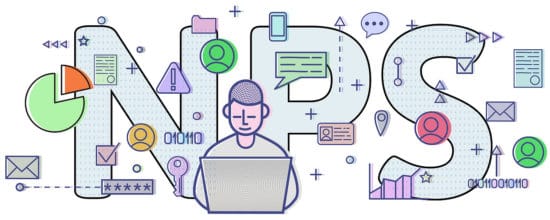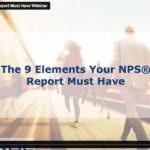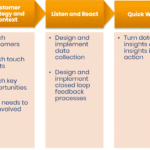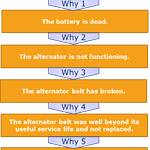Customer retention is arguably the most important aspect of growing a company, yet it is one that many organisations overlook.
They are so focused on getting new customers that they fail to take proper care of existing customers.
But, given that it’s about six times more expensive to acquire a new customer than it is to keep an existing one, you’d think that more companies would put their focus on customer retention, instead.
Some companies get it, though.
T-Mobile is a great example of a business that has achieved phenomenal success through its commitment to customer satisfaction and retention.
The company has an impressive NPS (Net Promoter Score) which shows the company’s understanding that the longer you can keep a customer, the greater the value of each acquired customer.
But what is their secret? How do T-Mobile and other businesses succeed with NPS scores?
Read on to find out.
What is the Net Promoter Score (NPS)?
Net Promoter Score is a customer loyalty metric that asks one simple question:

Depending on how the customer responds, they can be categorized as either detractors, passives, or promoters.
- Promoters (score of 9 or 10): These are people who are very happy with their experience and will often spread positive word-of-mouth pertaining to the business or brand.
- Passives (score of 7 or 8): These people are not unhappy with their customer experience, but they are not singing the brand’s praises to other users, either.
- Detractors (score between 0 and 6): These are people who have had a bad or unpleasant experience with the brand and typically have some issue that needs to be addressed before they begin spreading negative word-of-mouth that can potentially damage your brand and impede your businesses growth.
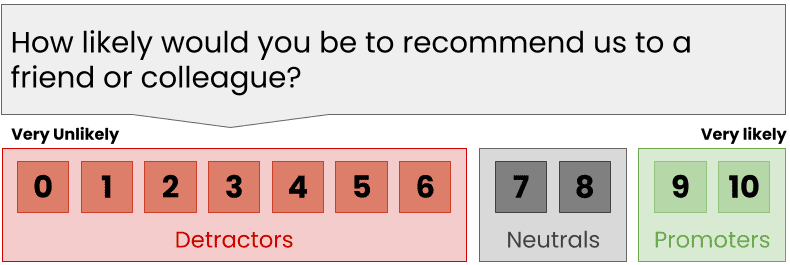
As you can see, this is a powerful metric that shows your customer’s willingness to make a recommendation to their friends, family, or colleagues. You can also tell you the likelihood of that customer returning to make another purchase.
The main advantage of using an NPS score is that it is easy to collect, interpret, and communicate the data. The metric has a close correlation to your company’s growth, and when used properly, the NPS score can help you increase your company’s revenue.
How is NPS Calculated?
The Net Promoter Score is calculated by subtracting the percentage of respondents that are detractors (score of 0-6) from the percentage of customers that are promoters (score of 9-10), giving you an NPS score somewhere between -100 and 100.

Any score above 0 is good.
T-Mobile currently has an NPS of 48, which is very impressive, particularly when compared to its similarly-sized competition.
This amazing score is thanks mostly to the company’s customer-first approach which allows it to focus on customer satisfaction and retention.

What Industry Does NPS Work For?
The Net Promoter Score can work for all industries, including:
- Telecom
- Air Transportation
- Industrial Goods & Services
- Consumer Products
- Healthcare
- B2B and Public Sector
- Retail
- Financial Services
- Technology
- Media
Benefits of Using Net Promoter Score
Because the NPS is so simple to obtain, many companies often overlook its importance. However, this simple metric comes with a lot of powerful benefits for businesses, such as:
- Polishing Interactions with Customers and Prospects: Create a customer-driven culture that is committed to constant and never-ending improvement by tracking how likely your current customers are to recommend your product or services to others. The use of engaging and interactive product demo videos can be exactly what you need to make it easy for your promoters to share your content with prospects.
- Creating and Developing New Products and Services: In addition to using NPS for customer service, you can also use it for product development to find out what customers think about specific features of updates. You can then use this information to repair broken products or create new and improved versions of your current products. For digital services and software, consider using a screen recorder to show prospective customers and converts how to use the tools most effectively (personally, I prefer using Movavi Screen Recorder)
- Reducing Potential Churn: If you can retain more customers, you’ll save money in the long run because (as previously stated) it costs more to get new customers than it does to reduce customer churn. One of the most effective ways to reduce churn and increase NPS scores is to create content on a variety of different platforms so that your followers and fans can interact with you and your brand in the way they most prefer. You can use traditional tools like social media, email, and blogs articles or experiment with podcast hosting tools, eLearning platforms, and much more.
- Communicating with Active Customers: Giving people an easy way to provide feedback is a great opportunity for communicating with your customer base and showing genuine interest in their opinions.
- Demonstrating Your Dedication to Customer Success: Using NPS surveys is an effective way to show your customers that you are deeply invested in helping them succeed and that you care about improving their future experience with your business. Use webinar platforms or similer tools to showcase the results of NPS surveys and explain how you’re working to improve those scores and increase the experience of your loyal customers and end-users.
How T-Mobile Improved their NPS
T-Mobile is a popular company that used its NPS scores to grow the businesses into a successful telecommunications leader and facilitate business mergers, such as the Sprint acquisition.
All of this success came down to high customer retention and growth – all of which is outlined by the company’s high NPS score.
A high NPS score means that the majority of customers are happy and satisfied with the brand.
They are likely to not only stick around, continuing to purchase the company’s products and services but also likely to spread positive word-of-mouth which helps the company generate new customers.
T-Mobile currently has an NPS score of 17, which is considered the best in it’s industry – Telecommunications/Wireless Carrier.
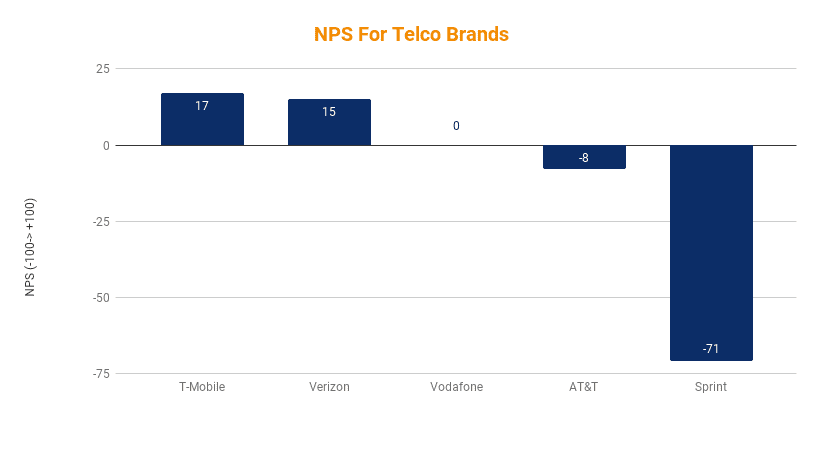
How T-Mobile and Other Businesses Succeed with NPS Scores
T-Mobile isn’t the only company that leverages the power of the NPS metric to grow its business.
Companies with high Net Promoter Scores have one thing in common: Higher customer retention levels.
They focus on customer retention as a major part of their marketing strategies, which is what sets them apart from all the rest.
Here’s a look at the different ways that T-Mobile and other businesses use NPS scores to grow their businesses.
1. Customer-First Philosophy
T-Mobile and other companies with high customer retention have a “customer-first” approach. They have systems in place to ensure customer happiness at all times, such as;
- Listening to customers
- Fixing their pain points
- Giving them awesome deals (awesome coverage, in the case of T-Mobile)
Everything on the platform is oriented around its customers’ wants and needs. They call this the “un-carrier revolution” with an entire marketing campaign focused around the concept.
In an effort to make customers happy, the company ended roaming fees and annual contracts and implemented many other “un-carrier moves” designed to make working with T-Mobile as seamless and uncomplicated as possible as a way to keep customers loyal.
2. Improving the Digital Customer Experience
Yet another big move that turned the tides for this popular telecommunications company was its commitment to work hard on digital customer experience.
In the past few years, the company put a higher focus on the digital platforms on which it had a presence.
And, seeing as the majority of its customers’ first experiences with the brand were mostly digital, this was an effective way to increase customer satisfaction and retention. Brands can achieve this by using a professional logo (you can make one with a free logo maker), sharing their company values, visual identity, etc.
Here are some of the things T-Mobile did to improve digital customer experience:
- The company revamped its website to make it more modern and user-friendly
- They separated the front-end and back-end of the site to simplify things internally
- They integrated a variety of digital marketing channels, including social media and email
All of these things contributed toward increased customer engagement, happiness, and satisfaction which saw the business experiencing a significant increase in customer retention.
3. Prioritizing Customer Feedback
The change that had the biggest impact for T-Mobile was removing bots and phone menus as part of the company’s customer support services and replacing them with a call center, placing emphasis on human interaction for all customer service calls.
This got rid of customer complaints about call center runarounds, and customers getting bounced from one department to another which made completing a call a frustrating experience for most.
Now, customers can get their concerns and questions addressed quickly by a knowledgeable member of the customer support staff, which has led to a direct increase in customer satisfaction levels.
Examples of Companies that Leverage NPS Scores
Here are a few examples of businesses that use NPS scores as a way to boost customer loyalty and retention.
- Slack: This company uses word-of-mouth marketing (tracked through NPS) to help them find actionable insights to grow their business.
- Bonobos: This well-known eCommerce brand uses the Net Promoter Score to measure what customers most enjoy about its products.
- Glassdoor: This company has systems in place to use the NPS score to find ways to optimize its website and job board services.
Guest Author: Ron Stefanski
Ron Stefanski is a website entrepreneur and marketing professor who has a passion for helping people create and market their own online business. You can learn more from him by visiting OneHourProfessor.com

